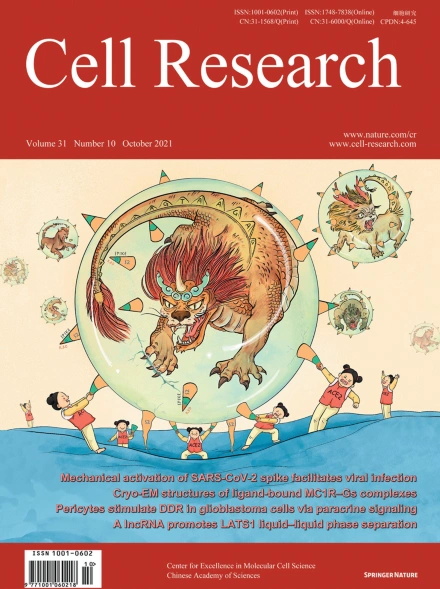
Advanced Search
Submit Manuscript
Advanced Search
Submit Manuscript
Volume 31, No 10, Oct 2021
ISSN: 1001-0602
EISSN: 1748-7838 2018
impact factor 17.848*
(Clarivate Analytics, 2019)
Volume 31 Issue 10, October 2021: 1047-1060 |
Mechanical activation of spike fosters SARS-CoV-2 viral infection
Wei Hu1,† , Yong Zhang2,† , Panyu Fei1,3,† , Tongtong Zhang1,4,† , Danmei Yao1,† , Yufei Gao1,3 , Jia Liu5,6 , Hui Chen2 , Qiao Lu5,6 , Tenny Mudianto5 , Xinrui Zhang1 , Chuxuan Xiao7 , Yang Ye8 , Qiming Sun1 , Jing Zhang9 , Qi Xie10 , Pei-Hui Wang9 , Jun Wang5,6,* , Zhenhai Li11,* , Jizhong Lou2,12,13,* , Wei Chen1,7,14,*
1Department of Cardiology of the Second Affiliated Hospital and Department of Cell Biology, Zhejiang University School of Medicine, Hangzhou, Zhejiang, ChinaThe outbreak of SARS-CoV-2 (SARS2) has caused a global COVID-19 pandemic. The spike protein of SARS2 (SARS2-S) recognizes host receptors, including ACE2, to initiate viral entry in a complex biomechanical environment. Here, we reveal that tensile force, generated by bending of the host cell membrane, strengthens spike recognition of ACE2 and accelerates the detachment of spike’s S1 subunit from the S2 subunit to rapidly prime the viral fusion machinery. Mechanistically, such mechano-activation is fulfilled by force-induced opening and rotation of spike’s receptor-binding domain to prolong the bond lifetime of spike/ACE2 binding, up to 4 times longer than that of SARS-S binding with ACE2 under 10 pN force application, and subsequently by force-accelerated S1/S2 detachment which is up to ~103 times faster than that in the no-force condition. Interestingly, the SARS2-S D614G mutant, a more infectious variant, shows 3-time stronger force-dependent ACE2 binding and 35-time faster force-induced S1/S2 detachment. We also reveal that an anti-S1/S2 non-RBD-blocking antibody that was derived from convalescent COVID-19 patients with potent neutralizing capability can reduce S1/S2 detachment by 3 × 106 times under force. Our study sheds light on the mechano-chemistry of spike activation and on developing a non-RBD-blocking but S1/S2-locking therapeutic strategy to prevent SARS2 invasion.
https://doi.org/10.1038/s41422-021-00558-x